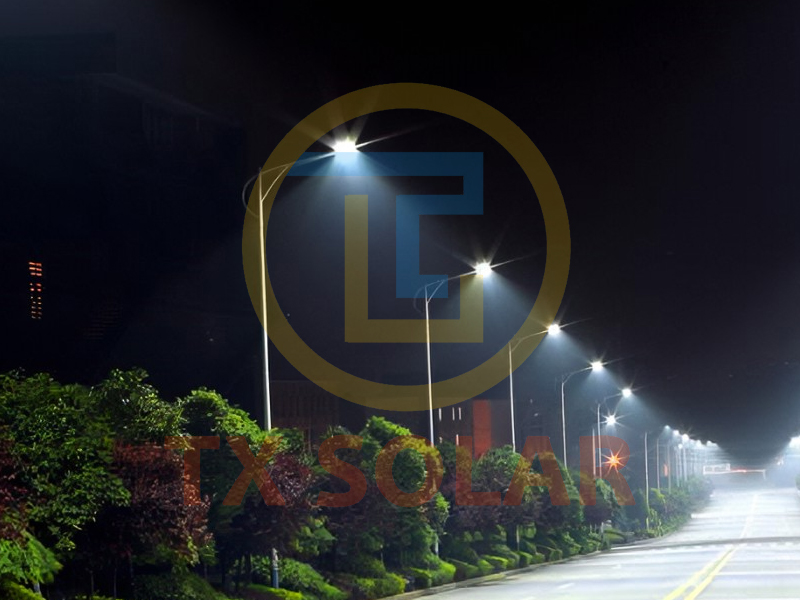Parks are an important part of urban and suburban landscapes, providing spaces for recreation, relaxation and community engagement. As more and more people take advantage of these green spaces, especially at night, the importance of effective park lighting cannot be overstated. Proper park lighting not only improves safety but also enhances the aesthetics of the environment. However, achieving the proper balance of brightness is crucial, and this is where park lighting brightness standards come into play.
Importance of Park Lighting
Effective park lighting serves multiple purposes. First and foremost, it improves safety by lighting up roads, playgrounds and other recreational areas. Well-lit parks can deter criminal activity and reduce the risk of accidents such as trips and falls. Additionally, adequate lighting encourages more people to use the park after dark, fostering a sense of community and promoting healthy outdoor activity.
In addition, park lighting plays an important role in creating a warm atmosphere. Carefully designed lighting can highlight natural features such as trees and bodies of water while also providing a warm and welcoming environment for visitors. This aesthetic appeal can enhance the overall experience for park visitors, making them more likely to return.
Understand the brightness standard
Brightness standards for park lighting are important guidelines that help ensure safety, functionality and visual comfort. These standards are typically developed by local governments, city planners and lighting professionals, taking into account various factors such as park type, intended use and surrounding environment.
Key factors affecting brightness standards
1.Park Type: Different parks have different uses. For example, a community park with playgrounds and sports facilities may require higher brightness levels than a natural park designed for quiet reflection. Understanding the park’s primary use is critical to determining appropriate lighting levels.
2. Aisle and Area Usage: High traffic areas, such as walking paths, parking lots, and gathering spaces, require brighter lighting to ensure safety. Conversely, more secluded areas may require softer lighting to maintain a peaceful atmosphere while still providing enough lighting for safety.
3. Ambient Environment: The surrounding environment plays an important role in determining the brightness standard. Urban areas with higher ambient light levels may require different standards than rural environments. Additionally, consideration of wildlife and natural habitats is crucial for parks with a variety of species.
4. Lighting Technology: Advances in lighting technology such as LED fixtures have revolutionized park lighting. LEDs are energy efficient, long-lasting, and have adjustable brightness levels. This flexibility allows for more customized lighting solutions that meet specific brightness standards while minimizing energy consumption.
Recommended brightness level
While specific brightness standards may vary by location and park type, general guidelines can help park planners and designers. The Illuminating Engineering Society (IES) provides advice on outdoor lighting, including parks. Here are some common brightness levels:
- Paths and Sidewalks: It is recommended that paths be at least 1 to 2 footcandles (fc) to ensure safe navigation. This brightness level allows people to see obstacles and navigate safely.
- Playground: For playgrounds, a brightness level of 5 to 10 fc is generally recommended. This ensures that children can play safely while allowing effective parental supervision.
- Parking: The minimum brightness in parking areas should be 2 to 5 fc to ensure visibility for pedestrians and drivers. Adequate lighting in parking lots is critical to safety.
- Gathering Spaces: Areas designed for gatherings, such as picnic spots or event spaces, may require a brightness level of 5 to 10 fc to create a welcoming atmosphere while ensuring safety.
Balance brightness and beauty
While adhering to brightness standards is critical for safety, it is equally important to consider the aesthetics of your park lighting. Too bright lighting can create harsh shadows and an unwelcome atmosphere, while insufficient lighting can cause safety issues. Striking the right balance is key.
One effective approach is to use a combination of ambient lighting, task lighting, and accent lighting. Ambient lighting provides overall illumination, task lighting focuses on specific areas (such as a playground), and accent lighting highlights natural features or architectural elements. This layered approach not only meets brightness standards but also enhances the visual appeal of the park.
In conclusion
Park lighting is an important aspect of urban planning, directly affecting safety, usability and aesthetics. Understanding park lighting brightness standards is critical to creating an environment that is both functional and attractive. By considering factors such as park type, area use and surrounding environment, planners can develop effective lighting solutions that enhance the overall park experience.
As communities continue to grow, the importance of well-lit parks will only grow. By adhering to established brightness standards and using innovative lighting technology, we can ensure our parks remain safe, welcoming and beautiful spaces for everyone to enjoy, day or night.
Post time: Sep-27-2024

